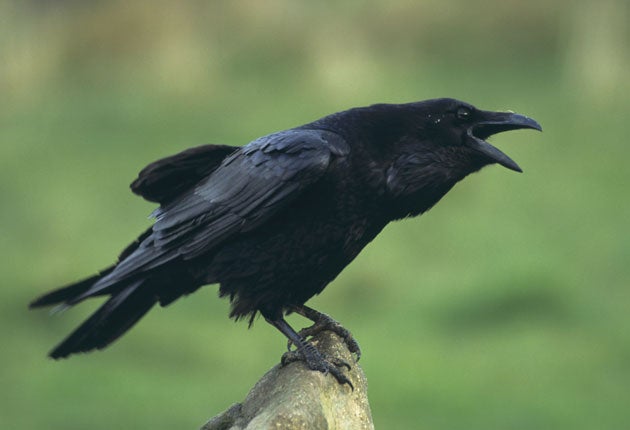Ravens invade eastward from wilds of 'Celtic fringe'

Your support helps us to tell the story
From reproductive rights to climate change to Big Tech, The Independent is on the ground when the story is developing. Whether it's investigating the financials of Elon Musk's pro-Trump PAC or producing our latest documentary, 'The A Word', which shines a light on the American women fighting for reproductive rights, we know how important it is to parse out the facts from the messaging.
At such a critical moment in US history, we need reporters on the ground. Your donation allows us to keep sending journalists to speak to both sides of the story.
The Independent is trusted by Americans across the entire political spectrum. And unlike many other quality news outlets, we choose not to lock Americans out of our reporting and analysis with paywalls. We believe quality journalism should be available to everyone, paid for by those who can afford it.
Your support makes all the difference.A new study shows one of the most remarkable British wildlife phenomena of the last 20 years, the advance of the common raven (Corvus corax).
For most of the 20th century Britain's largest crow, the great black bird of morbid legend, was confined to the "Celtic fringe" of Britain. Persecution by Victorian gamekeepers had extinguished it in the English lowlands and driven it to the hills and moors of the West Country, Wales, the Lake District and Scotland. With the gamekeepers mostly gone, it is returning.
During the last 20 years the birds have begun to spread eastwards from the Welsh borders into the Midlands, and by 1995 they were in Cheshire, Derbyshire, Staffordshire, Worcestershire and Wiltshire. By 2005 they had spread as far south as East and West Sussex. Last summer, for the first time in more than a century, a pair nested on the White Cliffs of Dover in Kent, and successfully raised two young.
The fieldwork study, which maps the raven frontier and the great migration has been produced for The New Atlas of Breeding Birds in Britain and Ireland: 2007-2011, to be published in 2012.
"Birdwatchers will be thrilled to see them recolonising central England and pushing into the South-east," said Dawn Balmer of the British Trust for Ornithology, publishers of the atlas.
Join our commenting forum
Join thought-provoking conversations, follow other Independent readers and see their replies
Comments